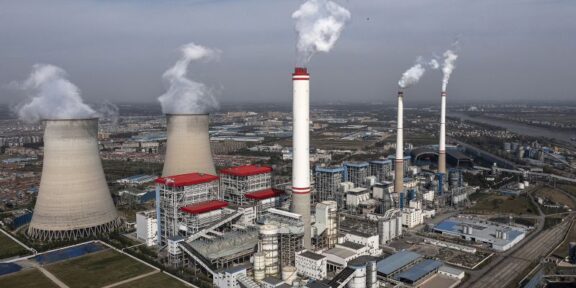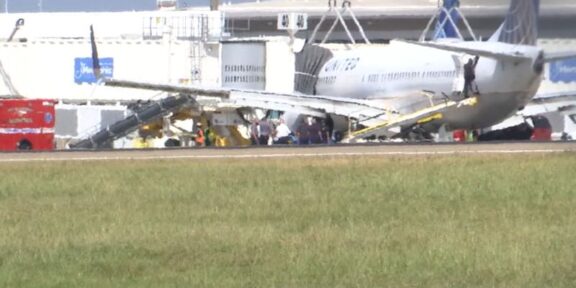CNN
—
The bottom shook, home windows shattered, and the cries of sufferers crammed the air. An Israeli bomb had simply struck Beirut’s southern suburbs in one more near-nightly assault – this time hitting a constructing throughout the road from Lebanon’s largest public hospital.
“I used to be treating a affected person when the bomb went off. I fell over him from the shock of it,” stated Mohammad Fouani, an emergency room nurse at Rafik Hariri College Hospital, recalling the aftermath of the October 21 assault. “The smoke was so thick; I may barely see my fellow colleagues.”
“Because the begin of the struggle, each evening has been troublesome,” Fouani advised CNN. “However this was the worst by far. It was essentially the most painful.”
Israel stated the strike hit a Hezbollah goal, although the world was not coated in Israeli navy evacuation orders for places with alleged hyperlinks to the Iran-backed group within the south of Beirut. No less than 18 folks, together with 4 kids, had been killed and 60 injured within the residential constructing some 70 meters away from the hospital, Lebanon’s well being ministry stated.
Lebanon’s well being sector has been within the thick of a ferocious Israeli air assault as Israel and Hezbollah commerce fireplace in an ongoing struggle, with the nation’s south and Beirut’s southern suburbs hardest hit. Within the first month of its all-out air offensive in Lebanon, which started on September 23, Israeli strikes broken 34 hospitals, killed 111 emergency medical technicians (EMTs), and hit 107 ambulances, in line with information compiled by the Lebanese well being ministry.
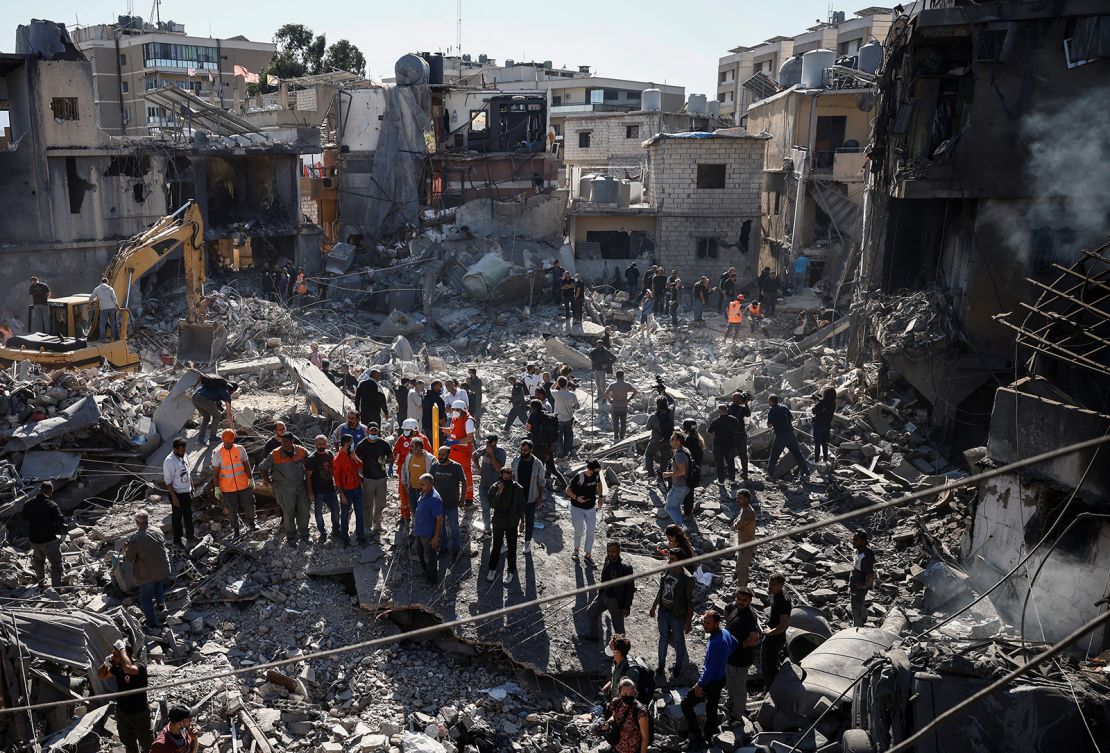
Round 20% of all hospitals registered with the well being ministry in Lebanon have been broken in a month of assaults, with most strikes touchdown of their neighborhood, in line with information compiled by medical authorities.
The Lebanese well being ministry information and CNN’s evaluation of airstrikes present that the Israeli navy has dropped bombs inside harmful proximity of hospitals, that are protected below worldwide regulation.
Responding to CNN’s request for remark, the Israel Protection Forces (IDF) stated it operates in strict accordance with worldwide regulation and accused Hezbollah of being deeply embedded in civilian areas. “Hezbollah strategically locations its navy property in shut proximity to medical amenities, similar to hospitals and clinics, as a part of its human defend technique,” it stated.
For a rustic that has been embroiled in lots of cycles of struggle and crises, the Lebanese healthcare sector has hardly ever been so weak to firepower, the nation’s well being minister, Dr. Firass Abiad, advised CNN. Abiad accused Israel of “weaponizing” entry to healthcare and drew parallels to Gaza, the place Israel has overtly attacked hospitals, accusing them of hyperlinks to Hamas.
“Well being establishments are imagined to be sanctuaries,” stated Abiad. “It’s clear that that is premeditated, that this can be a state coverage that Israel is following, whether or not in Gaza or in Lebanon.”
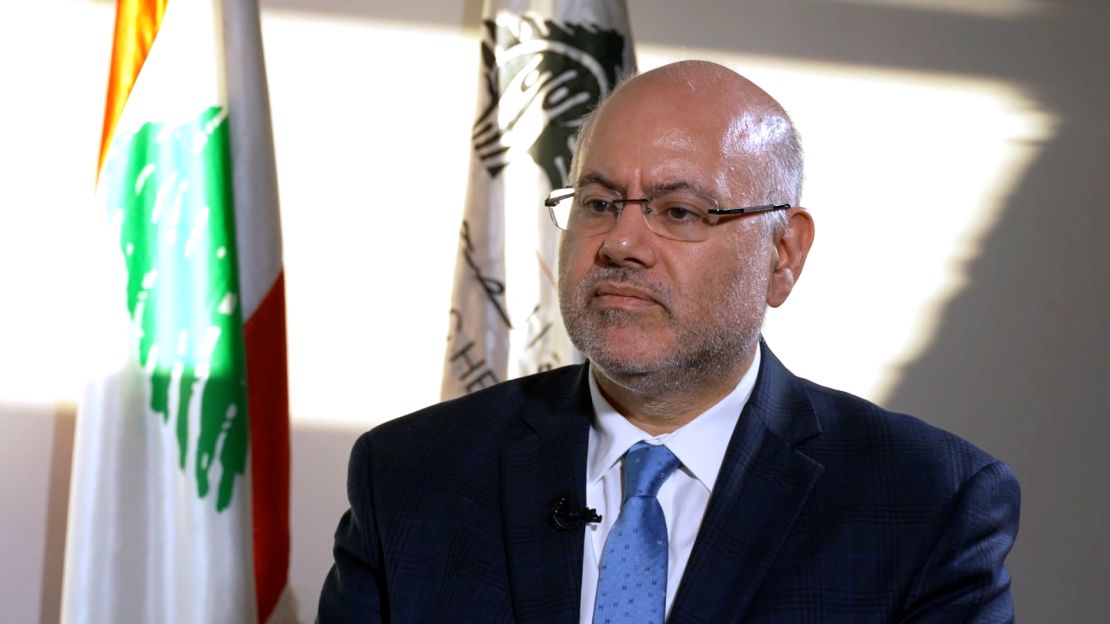
CNN has reviewed over 240 airstrikes in Lebanon and located that not less than 24 hospitals had been inside a 500-meter hazard zone – utilized by the Israeli navy as its parameter for evacuation areas – of the bombs. Israel dropped munitions inside what is named a “deadly vary” – 340 meters – of not less than 19 hospitals, the evaluation, which coated the primary month of the struggle, confirmed.
CNN’s evaluation solely checked out airstrikes verified in publicly out there imagery or declared in Israeli navy evacuation orders between September 23 and October 23. That pattern is smaller than the a couple of thousand Israeli strikes estimated by the Armed Battle Location and Occasion Knowledge Challenge (ACLED), a disaster monitoring group, to have hit Lebanon over the course of the month and so has doubtless produced a conservative estimate of hospitals inside a harmful or deadly vary.
“Even a hospital that isn’t immediately focused may be broken from the blast wave or fragmentation brought on by a close-by strike,” Trevor Ball, a former senior explosive ordnance technician for the US navy, advised CNN. “Fragments can injure or kill folks a whole lot of meters away, which means a strike a whole lot of meters away may nonetheless injure or kill folks that aren’t behind ample safety.”
CNN shared with the IDF a listing of coordinates for all 24 hospitals it assessed as having been inside harmful proximity of Israeli strikes, 16 of which had been broken in line with information compiled by the Lebanese well being ministry and medics. The IDF didn’t touch upon CNN’s particular findings, however stated it was solely working in opposition to Hezbollah, “not the Lebanese inhabitants or medical amenities” and took measures to mitigate hurt to civilians.
Abiad, who’s a veteran physician and former hospital director, stated the close by strikes have had a devastating have an effect on on healthcare. “When you goal so near the world, it signifies that folks at the moment are afraid to come back to the hospital,” Abiad advised CNN. “Some folks within the hospital would fairly go house than obtain therapy as a result of they’re anxious that they are going to be focused in hospitals.”
The UN particular coordinator for Lebanon stated on October 25 that “first responders heeding the decision to assist, together with healthcare personnel and paramedics, have additionally been exhausting hit,” and known as the variety of assaults impacting healthcare amenities and personnel “alarming.”
The assaults on the primary responders, stated Abiad, has despatched “a really chilling message: when you’re injured, you’re going to die.”
Israel has repeatedly accused Hezbollah of utilizing ambulances to move weapons, although it has not offered proof. Lots of the ambulances hit and first-responders killed in Israeli strikes had been affiliated with Hezbollah’s civilian infrastructure. No less than 12 Lebanese Civil Protection first responders and 16 Lebanese Purple Cross paramedics have been killed in strikes. The IDF didn’t reply to CNN’s request for touch upon assaults which have killed paramedics and emergency staff.
Since September 23, Israeli strikes have killed eight folks contained in the premises of 4 hospitals, and eight amenities have been compelled to shut, in line with the well being ministry.
Hospitals and different medical institutions are protected civilian objects below worldwide humanitarian regulation. It’s unlawful, with few exceptions, to assault hospitals, ambulances or different well being amenities, or to in any other case forestall them from offering care. In a report launched on Wednesday, Human Rights Watch referred to Israeli assaults on healthcare staff in Lebanon as “obvious struggle crimes.”
The menace to Lebanon’s healthcare sector was felt most acutely on the evening of October 21. In addition to the strike that hit the Rafik Hariri College Hospital, Israel additionally claimed that one other main hospital within the south of Beirut, Al Sahel Basic Hospital, was situated above a Hezbollah bunker. Hours later, hospital workers and sufferers evacuated the ability for concern it could be hit. The following day, journalists toured the premises and stated they discovered no proof to assist the declare.
Israel printed a 3D graphic to indicate what they claimed was a Hezbollah underground facility storing money and gold beneath the hospital. Officers at Sahel Basic Hospital vehemently denied the accusation, and Israel has not struck the hospital.
For the Lebanese, the graphic was harking back to imagery launched by the Israeli navy final yr alleging the presence of a Hamas “command-and-control” middle below Gaza Metropolis’s al-Shifa hospital. The hospital was later attacked by Israeli forces.
“For me, what’s actually regarding is that the rhetoric from the Israelis is identical, particularly after they speak about infrastructure beneath healthcare,” stated Dr. Thaer Ahmad, an American doctor who volunteered at Gaza’s Al Nasser hospital in Khan Younis earlier this yr and is now working in Lebanon.
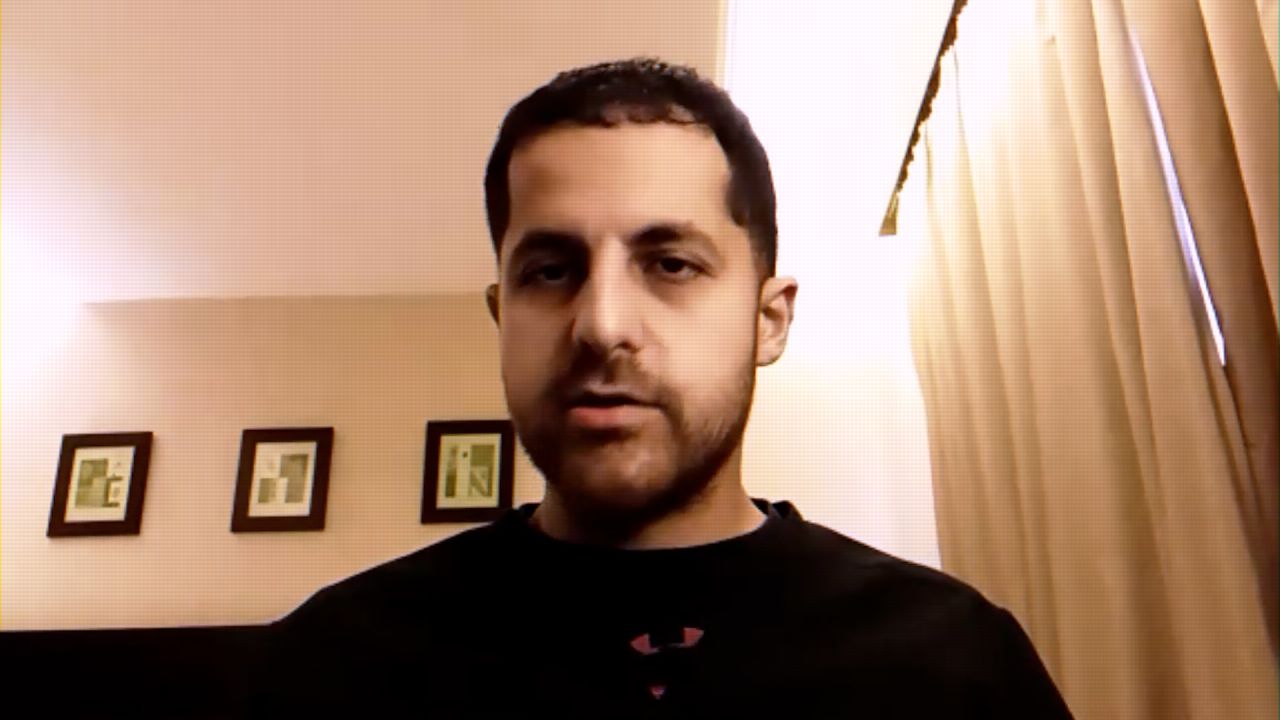
Physician who labored in Gaza now fears for Lebanon
Ahmad stated all healthcare staff he’s interacted with are “pessimistic,” and concern the well being system will undergo the identical destiny because it has in Gaza.
“There are not any purple strains. There is no such thing as a respect for worldwide humanitarian regulation. We noticed that in Gaza for the previous 13 months and we’re seeing it in Lebanon,” Ahmad advised CNN. “Are we heading in that very same course, are we truly going to see this repeat itself?”
Israel’s air, floor and naval assault on Hezbollah in Lebanon has decimated the Iran-backed group’s navy management and dealt harsh blows to its rank-and-file, in addition to to its arsenal of weaponry. It has additionally killed a whole lot of civilians, in line with well being authorities, and destroyed giant swathes of civilian infrastructure.
Israel has recurrently dropped 1,000-pound and a pair of,000-pound bombs on Lebanon, in line with evaluation of aftermath imagery by weapons specialists, inflicting catastrophic injury to neighborhoods and cities. The Israeli navy has argued that it has deployed these bombs as bunker busters to destroy Hezbollah’s underground infrastructure.
The weapons specialists advised CNN that Israel has additionally used the GBU-39, or small-diameter bomb, to take out single flooring of multistorey buildings. The assaults have been concentrated in, although not restricted to, areas of Hezbollah dominance – particularly the south and east of the nation in addition to the southern suburbs of Beirut.
The deadly fragmentation radius of those bombs places close by folks and civilian buildings, similar to hospitals, at critical danger. When they’re dropped, white-hot metallic fragments can fly out in all instructions, tearing by way of their environment. Identified by specialists as a “kill zone,” the world of publicity to harm or dying round a goal can vary from 340 meters for small-diameter bombs, to 365 meters for 1,000 and a pair of,000 bombs, weapons specialists say.
All eight hospitals within the southern suburbs of Beirut, referred to as Dahiyeh, fell inside the deadly fragmentation zones of verified airstrikes. In line with the well being ministry, all of those healthcare amenities had been broken within the first month of Israel’s offensive since late September. Three hospitals on the sides of the world had been additionally broken, in line with the ministry’s information.
Virtually all of Hezbollah’s management had been killed in Israeli strikes in Dahiyeh, the group’s seat of energy. A number of movies of assaults there have proven indicators of secondary explosions – proof that not less than a few of the targets had been weapons depots.
Beirut’s southern suburbs, beforehand house to round 1,000,000 folks, had been additionally a significant flashpoint of Israeli assaults within the nation’s final all-out struggle with Lebanon in 2006. Airstrikes there remodeled giant components of the world right into a seemingly limitless stretch of rubble and detritus. But again then, the bombing marketing campaign left hospitals within the south of Beirut comparatively unscathed.
Beneath worldwide regulation, a hospital can lose its particular protected standing solely whether it is getting used for navy functions. However the wounded and sick inside are nonetheless protected by the precept of proportionality, and time have to be given for evacuation earlier than an assault.
On October 1, an Israeli strike close to al-Zahra College Hospital in Dahiyeh killed one individual and injured two extra inside the ability’s premises, in line with the well being ministry. Video of the assault analyzed by CNN discovered that the strike hit a constructing adjoining to the perimeter of the hospital, lower than 50 meters away from the primary constructing.
The evaluation discovered that the weapon was doubtless a GBU-39.
The toughest-hit well being amenities have been within the southernmost a part of Lebanon, the place the Israeli air assault has been essentially the most intense and floor forces have been met with fierce resistance from Hezbollah fighters. It was in that area that the primary of the nation’s hospitals shuttered after the beginning of the all-out offensive.
Within the city of Bint Jbeil, Israel struck a mosque which it described as a command middle inside the compound of the Salah Ghandour hospital on October 4. Ten folks contained in the hospital had been injured, in line with the well being ministry, forcing it to shut.
That day, an Israeli airstrike hit the premises of Marjayoun governmental hospital in a southern Christian city of the identical title.
Two folks had been killed outdoors of the hospital’s emergency room, in line with well being minister Abiad. CNN spoke to the director of the hospital hours after it was evacuated.
“We held on for so long as we may,” Dr. Mones Kalakish advised CNN as he was departing the Marjayoun space, which had been surrounded by intensive bombardment for weeks. “However this morning, we got here below fireplace, and we needed to evacuate. We had been panicked and we had been terrified.”
The evening {that a} close by strike rocked Beirut’s Rafik Hariri College Hospital there was panicked dialogue among the many workers about whether or not to evacuate. “Due to Gaza and what occurred to the hospitals within the south and the remainder of the nation, our preliminary thought was that the hospital itself was hit,” stated Rafik Hariri College Hospital director Jihad Saadeh. “However once we noticed that it wasn’t a direct hit, we had been reassured. We continued our work.”
For Nurse Foany, merely contemplating the evacuation was a terrifying thought. “Are you able to think about what that was like? Think about evacuating Lebanon’s largest public hospital, not simply its workers however its sick and its injured in a single evening,” he stated. “It was a horrific thought.”
CNN’s Rachel Wilson, Abeer Salman and Mohammad Tawfeeq contributed to this report. This story has been up to date.








